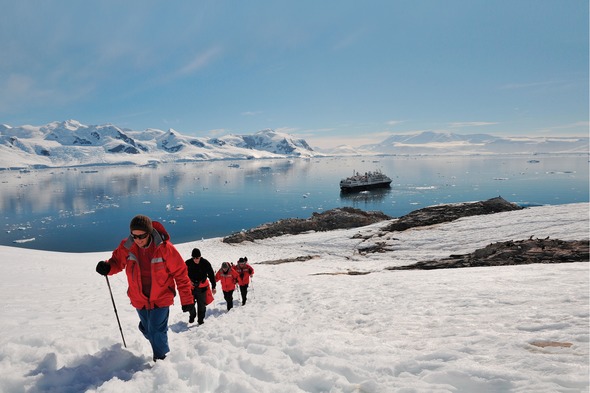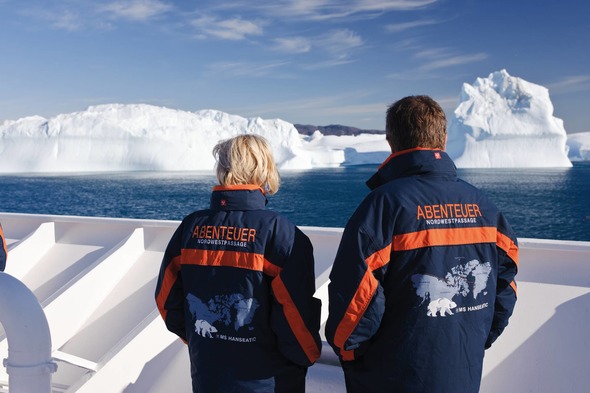Are you going somewhere cold? First hint is, think ski (not great if you don't ski, but it's a start). But remember, there is a difference. When you are skiing, the exercise will help you keep warm. On an expedition, you may be quite physical - hiking to a glacier, or kayaking between the icebergs, for example.

But you may be completely inactive - for example one morning when we were in Svalbard, the whole ship's complement took to the zodiacs to track two polar bears, mother and cub, who were striding along the water's edge. For two hours, we sat entranced in our rubber boat, inches from the Arctic ice, a steady wind blowing across the water, captivated by this amazing sight. But imagine, had we not been wearing the proper gear, just how cold we would have got as we sat as quietly and motionlessly as possible so as not to disturb the bears.
So, the key is layers. Next to the skin, a cosy base layer, using natural fibres such as merino wool or silk. Thermals after that, then a more bulky fleecy item or two, trapping extra layers of warm air between garments for added insulation. Likewise socks - one, two or even three pairs can be good. Over the top of everything, waterproof trousers, and an insulated jacket - make sure it's windproof, waterproof and very roomy, to make space for the extra layers beneath.

Don't forget a neck gaiter, a cosy hat that covers your ears, and gloves of course - wear a lightweight touchscreen pair so you can still take photos, with warm overmittens - on strings if possible, just like when you were a child at school, so you don't drop them in your hurry to get the best shot or manipulate your binoculars!
Most expedition cruise lines will supply a free parka, and provide rubber boots for you to borrow, so you won't need to carry these in your luggage - check before you go. (By the way, expedition cruises are not dressy, so you don't need gowns and jackets for the evenings - just normal holiday wear).

In warmer climes of course it is a different story. You will go ashore by zodiac, landing on uneven terrain or stony beaches, so take waterproof sandals to help you disembark speedily. Easy wash lightweight moisture wicking fabric is perfect in steamy climes, especially if you are going to be hiking. Long legs and sleeves help with protection from the sun and from insects. Be sure to take a wide-brimmed hat to protect your head, face and neck from the sun. Depending on your destination, you might find a lightweight waterproof jacket is useful - check what the rainfall levels will be during your visit.
You are likely to be snorkelling, so check that the ship carries equipment. They will probably have masks, tubes and flippers. In some areas at certain times, a wetsuit is also useful if water temperatures are cool - again, the ship is likely to carry these. Take your own if you wish, and also do take the trouble to get prescription goggles to make the most of snorkelling if your eyesight is not perfect.

Whether hot or cold, you will want a lightweight waterproof backpack in which you can carry your camera when going ashore, as well as drinking water, lip salve, and other equipment. Moisturiser, sunblock and UV sunglasses are essential - don't assume that in cold weather you won't need these. And in warmer climes, take good quality insect repellent as well.

Finally, take the best camera you have - and if you are going to be snorkelling, take an underwater camera too. If you're aiming to capture the Northern Lights, a sturdy tripod is a must. Make sure you are equipped with sufficient batteries and memory sticks - if the ship doesn't have what you need, you are not going to be able to find a store for extra supplies. And don't forget your binoculars.


